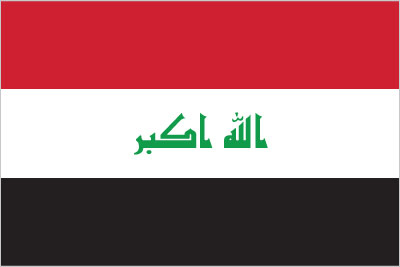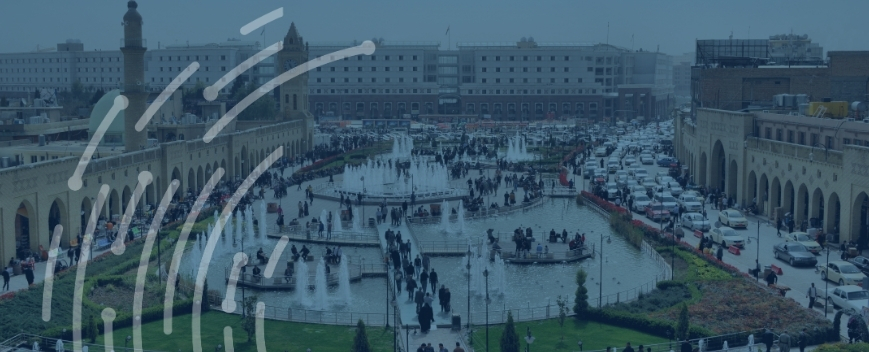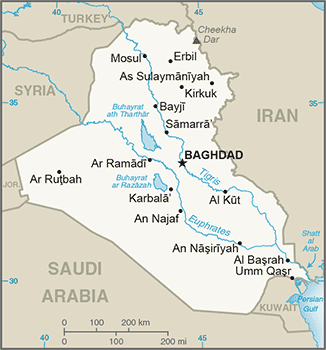Importing from Iraq


Iraq Country Profile
Official Name (Local Language) Jumhuriyat al-Iraq/Komar-i Eraq
Capital Baghdad
Population 38,146,025
Currency Iraqi Dinar
GDP $173 billion
Languages Arabic
Phone Dial In 964
Iraq Exports Profile
Exports ($m USD) 84,506
Number of Export Products 21
Number of Export Partners 16

Iraq Economic Statistics
Government Website | https://www.cabinet.iq/ |
| Sovereign Ratings | https://countryeconomy.com/ratings/iraq |
| Central Bank | Central Bank of Iraq |
| Currency USD Exchange Rate | 1,179 |
| Unemployment Rate | 16% |
| Population below poverty line | 23% |
| Inflation Rate | 2.4% |
| Prime Lending Rate | 0.06% |
| GDP | $173 billion |
| GDP Pro Capita (PPP) | $16,500 |
| Currency Name | Iraqi Dinar |
| Currency Code | IQD |
| World Bank Classification | Upper Middle Income |
| Competitive Industrial Performance | NA |
| Corruption Perceptions Index | 169/180 |
| Ease of Doing Business | 171/190 |
| Enabling Trade Index | NA |
Access trade, receivables and supply chain finance
We assist companies to access trade and receivables finance through our relationships with 270+ banks, funds and alternative finance houses.
Get StartedImporting from Iraq
Iraq is one of the most oil-dependent countries in the world, holding the world’s 5th largest crude oil reserves which account for 8% of global supply. Crude oil is effectively its only export, with India and China as the main destinations, as well as the US and Western Europe; it also exports small quantities of precious and base metals. Oil is by far the most important product in its economy, making up almost half of the country’s GDP and an overwhelming proportion of the state’s budget. This makes it vulnerable to fluctuations in oil prices, meaning even small changes significantly influence GDP and unemployment rates.
Iraq is virtually landlocked, with only one deepwater port next to Kuwait which it uses to export oil abroad. However, its strategic position on the Persian Gulf and between important OPEC countries Saudi Arabia and Iran makes it an important player in regional politics and land-based trade.
Iraq is a democratic country with one of the highest government approval ratings in the region. After political turmoil in 2022 and a year without a prime minister, the current government is pursuing an agenda of privatisation and infrastructure projects to promote growth and attract foreign direct investment. Although vast improvements have been made, islamist extremist terrorism is still a significant issue in Iraq, with ISIL still largely present in many areas. Turkey’s war against Kurdish rebels leads to occasional bombings near the Iraqi-Turkish border, making the country still somewhat fragile from a security perspective despite its strong government and relative lack of civil unrest.
Importing from Iraq: What is trade finance?
The imports in Iraq declined from US $50,446 million to only US $45,200 million. As reported by the Central Bank of Iraq, the country’s imports averaged US $22,700 million from 1988 to 2014. On the other hand it reached its highest peak amounting to US $50,500 million in 2013 and its lowest point occurred in 1994 at around US $ 2,700 million.
Iraq’s major import commodities are Cars ($1.6 B), Raw Iron Bars (around $1 B), Insulated Wire ($900M), Rice ($850 M) and Delivery Trucks ($800 M). In addition to these items, about 40% percent of Iraq’s main imports are machinery and transport equipment, manufactured articles at about 27%, 10% for mineral fuels and another 7% for chemicals and related products.
These commodities are imported primarily from Turkey ($12 B), China ($6.9 B), South Korea ($2 B), Italy ($1.7 B) and Germany ($1.7 B).
Chart Showing GDP Growth Compared to rest of world
GDP Composition for Iraq
Agriculture
5.7%
Wheat, barley, rice, vegetables, dates, cotton; cattle, sheep, poultry
Industry
45.1%
Petroleum, chemicals, textiles, leather, construction materials, food processing, fertilizer, metal fabrication/processing
Services
49.3%
Map
Top 5 Exports Partners
| Country | Trade | % Partner Share |
| Unspecified | 84,303 | 99.76 |
| United Arab Emirates | 129 | 0.15 |
| Syrian Arab Republic | 34 | 0.04 |
| Turkey | 18 | 0.02 |
| Jordan | 14 |
Top 5 Exports Products
| Export Product | Number |
| Petroleum oils and oils obtained from bituminou | 99.3% |
| Petroleum oils, etc, (excl. crude); preparation | 0.5% |
| Other monoalkylethers of ethylene glycol or of | 0.2% |
| Other lubricating preparations, with <70% petro | 0% |
| Raw skins of sheep or lambs, with wool on | 0% |
Local Partners
- All Topics
- Iraq Trade Resources
- Export Finance & ECA Topics
- Local Conferences



















